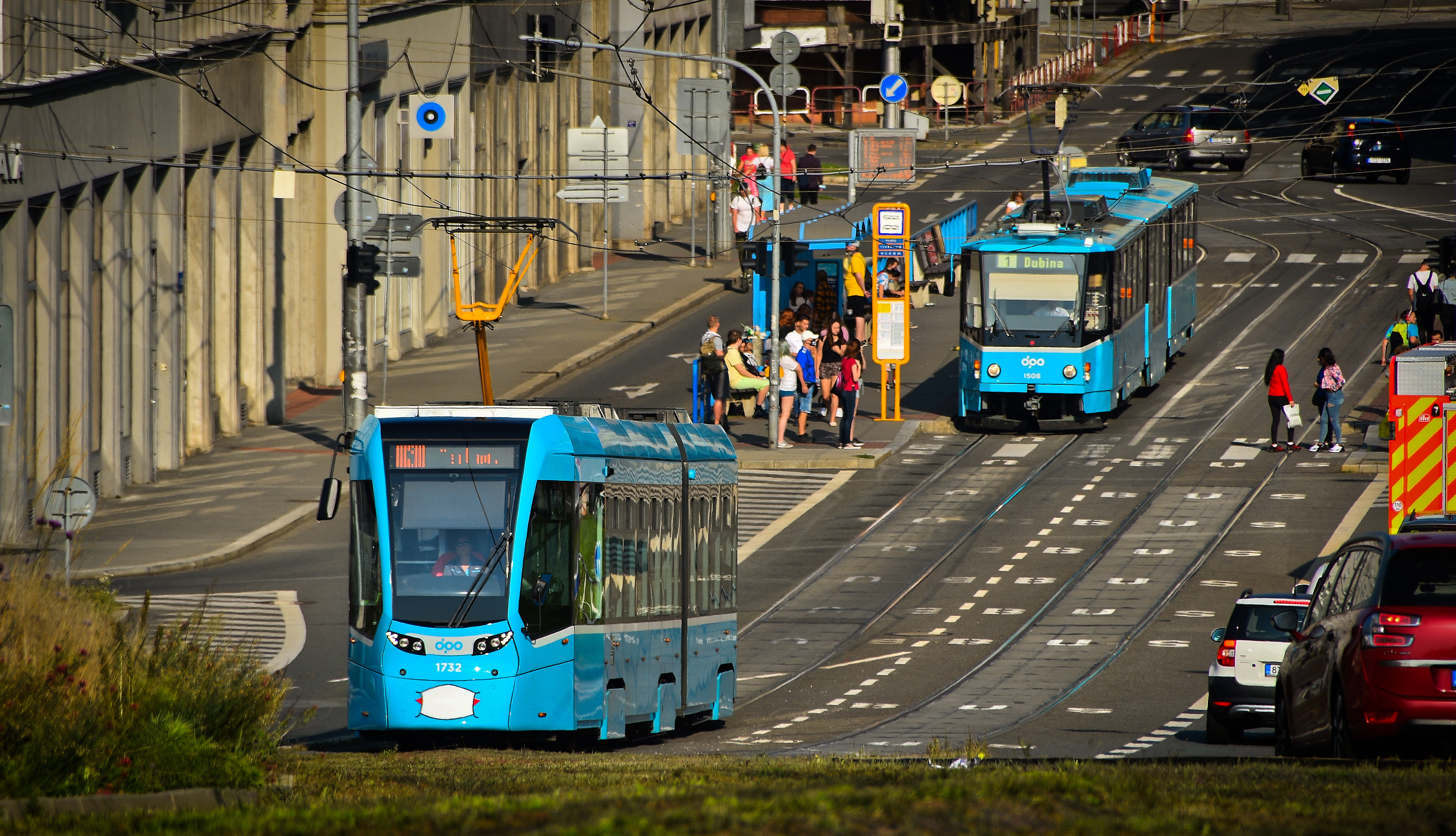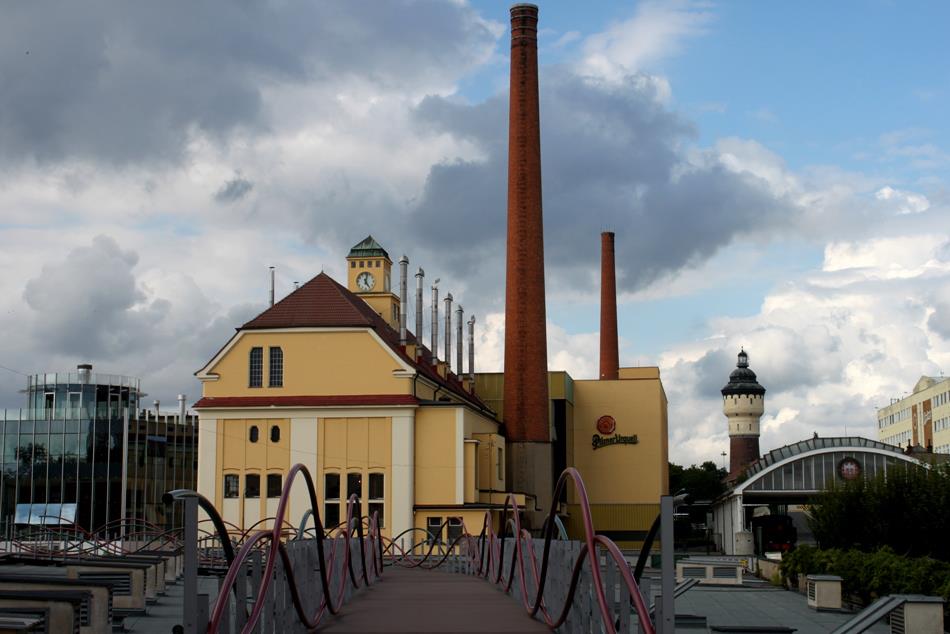|
҆koda 27Tr Solaris
҆koda 27Tr Solaris is a Low-floor bus, low-entry trolleybus model produced from 2010 by Czech Republic, Czech trolleybus manufacturer ''҆koda Electric'' (subsidiary of ҆koda Transportation), supplying electrical equipment, in cooperation with the Polish company Solaris Bus & Coach, Solaris, manufacturing the trolleybus body. Installation and assembly of the trolleybus is carried out at ҆koda's plant in PlzeŇą, Czech Republic. A similar type of trolleybus with the same chassis is the Solaris Trollino 18 model. History The prototype of the 27Tr trolleybus, which was manufactured in 2009, was delivered to Dopravn√≠ podnik Ostrava in 2010 together with two twelve-meter ҆koda 26Tr cars. Prototype 27Tr went on its first test runs in PlzeŇą around Christmas 2009, in Ostrava on February 4, 2010 and was first sent into test operation with passengers on February 11, 2010. As a type, the 27Tr car was approved by the Railway Authority in the first quarter of 2010. The trolleybus has ... [...More Info...] [...Related Items...] OR: [Wikipedia] [Google] [Baidu] |
Solaris Bus & Coach
Solaris Bus & Coach sp z o.o. is a Polish manufacturer of public transport vehicles (buses, trolleybuses and trams), with its headquarters in Bolechowo-Osiedle near PoznaŇĄ. It is a subsidiary of Spanish rolling stock manufacturer Construcciones y Auxiliar de Ferrocarriles, CAF with a market share for electric buses in Europe of about 18%. The firm arose from the enterprise Neoplan Polska Sp√≥Ňāka z ograniczonńÖ odpowiedzialnoŇõcińÖ, Sp. z o.o., established in 1994. A production facility was launched in Bolechowo-Osiedle near PoznaŇĄ in 1996. The first low-floor bus produced in Bolechowo rolled off the assembly line on 22 March 1996 and it is this very date that is understood as the beginning of the company's history. 1999 saw the premiere of the first city bus of the Solaris brand ‚Äď the Solaris Urbino 12. In 2001 the company was rebranded into Solaris Bus & Coach Sp. z o.o., only to be converted from a limited liability company into a joint-stock company. The company is not lis ... [...More Info...] [...Related Items...] OR: [Wikipedia] [Google] [Baidu] |
Ostrava
Ostrava (; ; ) is a city in the north-east of the Czech Republic and the capital of the Moravian-Silesian Region. It has about 283,000 inhabitants. It lies from the border with Poland, at the confluences of four rivers: Oder, Opava (river), Opava, Ostravice (river), Ostravice and Luńćina (river), Luńćina. Ostrava is the third largest city in the Czech Republic in terms of both population and area, the second largest city in the region of Moravia, and the largest city in the historical land of Czech Silesia. It straddles the border of the two historic provinces of Moravia and Silesia. The wider conurbation ‚Äď which also includes the towns of Bohum√≠n, Hav√≠Ňôov, Karvin√°, Orlov√°, PetŇôvald (Karvin√° District), PetŇôvald and Rychvald ‚Äď is home to about 500,000 people, making it the largest urban area in the Czech Republic apart from the capital Prague. Ostrava grew in importance due to its position at the heart of a major coalfield, becoming an important industrial engine of t ... [...More Info...] [...Related Items...] OR: [Wikipedia] [Google] [Baidu] |
҆koda Vehicles
҆koda means "pity" in the Czech and Slovak languages. It may also refer to: Czech brands and enterprises * ҆koda Auto, automobile and previously bicycle manufacturer in Mlad√° Boleslav ** ҆koda Motorsport, the division of ҆koda Auto responsible for motorsport activities * ҆koda Transportation, engineering company that manufactures rail vehicles, based in PlzeŇą * ҆koda Works, engineering company, predecessor of ҆koda Transportation * ҆koda-Kauba, aircraft manufacturing subsidiary of the ҆koda Works in occupied Czechoslovakia in World War II * Doosan ҆koda Power, subsidiary of the Doosan Group, based in PlzeŇą People * ҆koda (surname) * Skoda (Portuguese footballer) (born 1960) Art * ''҆koda l√°sky'', the original Czech title of the "Beer Barrel Polka" Other * British Rail Class 90 The British Rail Class 90 is a type of electric locomotive. They were built for mixed-traffic duties, operating from overhead lines and producing . They weigh 84.5tonnes and can ty ... [...More Info...] [...Related Items...] OR: [Wikipedia] [Google] [Baidu] |
Articulated Buses
An articulated bus, also referred to as a slinky bus, bendy bus, tandem bus, vestibule bus, stretch bus, or an accordion bus, is an articulated vehicle, typically a motor bus or trolleybus, used in public transportation. It is usually a single-decker, and comprises two or more rigid sections linked by a pivoting joint (articulation) enclosed by protective bellows inside and outside and a cover plate on the floor. This allows a longer legal length than rigid-bodied buses, and hence a higher passenger capacity (94‚Äď120), while still allowing the bus to maneuver adequately. Due to their high passenger capacity, articulated buses are often used as part of bus rapid transit schemes, and can include mechanical guidance system and electric bus or trolleybus. Articulated buses are typically long, in contrast to standard rigid buses at long. The common arrangement of an articulated bus is to have a forward section with two axles leading a rear section with a single axle, with the ... [...More Info...] [...Related Items...] OR: [Wikipedia] [Google] [Baidu] |
Trolleybuses
A trolleybus (also known as trolley bus, trolley coach, trackless trolley, trackless tramin the 1910s and 1920sJoyce, J.; King, J. S.; and Newman, A. G. (1986). ''British Trolleybus Systems'', pp. 9, 12. London: Ian Allan Publishing. .or trolleyDunbar, Charles S. (1967). ''Buses, Trolleys & Trams''. Paul Hamlyn Ltd. (UK). Republished 2004 with or 9780753709702.) is an electric bus that draws power from dual overhead wires (generally suspended from roadside posts) using spring-loaded or pneumatically raised trolley poles. Two wires, and two trolley poles, are required to complete the electrical circuit. This differs from a tram or streetcar, which normally uses the track as the return path, needing only one wire and one pole (or pantograph). They are also distinct from other kinds of electric buses, which usually rely on batteries. Power is most commonly supplied as 600-volt direct current in older systems and 750-volts in newer systems, but there are exceptions. Currently, ... [...More Info...] [...Related Items...] OR: [Wikipedia] [Google] [Baidu] |
Ústí Nad Labem
√öst√≠ nad Labem (; ) is a city in the Czech Republic. It has about 91,000 inhabitants and is the capital of the √öst√≠ nad Labem Region. It is a major industrial centre and, besides being an active river port, is an important railway junction. Administrative division √öst√≠ nad Labem is divided into four self-governing boroughs. In addition, √öst√≠ nad Labem consists of 22 municipal parts (in brackets population according to the 2021 census): *√öst√≠ nad Labem-mńõsto (35,015) **BoŇĺtńõŇ°ice (496) **Bukov (5,988) **Habrovice (395) **Hostovice (249) **Kl√≠Ň°e (6,944) **PŇôedlice (1,544) **Skorotice (1,379) **Str√°Ňĺky (234) **VaŇąov (755) **VŇ°eboŇôice (2,870) **√öst√≠ nad Labem-centrum (14,161) *√öst√≠ nad Labem-NeŇ°tńõmice (22,148) **Kr√°sn√© BŇôezno (12,417) **MojŇĺ√≠Ňô (4,222) **NeŇ°tńõmice (5,509) *√öst√≠ nad Labem-Severn√≠ Terasa (18,965) **Severn√≠ Terasa (18,965) *√öst√≠ nad Labem-StŇôekov (13,585) ** Brn√° (1,308) **C√≠rkvice (179) **Kojetice (129) **OleŇ°nice (89) ** S ... [...More Info...] [...Related Items...] OR: [Wikipedia] [Google] [Baidu] |
ńĆesk√© Budńõjovice
ńĆesk√© Budńõjovice (; ) is a city in the South Bohemian Region of the Czech Republic. It has about 97,000 inhabitants. The city is located in the valley of the Vltava River, at its confluence with the MalŇ°e. ńĆesk√© Budńõjovice is the largest city in the region and its political and commercial capital, the seat of the Roman Catholic Diocese of ńĆesk√© Budńõjovice and the University of South Bohemia. It is famous for the Budweiser Budvar Brewery. The historic city centre is well preserved and is protected as an Cultural monument (Czech Republic)#Monument reservations, urban monument reservation. Administrative division ńĆesk√© Budńõjovice consists of seven municipal parts (in brackets population according to the 2021 census): *ńĆesk√© Budńõjovice 1 (3,024) *ńĆesk√© Budńõjovice 2 (36,041) *ńĆesk√© Budńõjovice 3 (25,568) *ńĆesk√© Budńõjovice 4 (1,999) *ńĆesk√© Budńõjovice 5 (8,171) *ńĆesk√© Budńõjovice 6 (8,839) *ńĆesk√© Budńõjovice 7 (12,022) ńĆesk√© Budńõjovice 5 forms an En ... [...More Info...] [...Related Items...] OR: [Wikipedia] [Google] [Baidu] |
Dopravní Podnik Ostrava
Dopravn√≠ podnik Ostrava (DPO, ''Ostrava Transport Company'') is the primary operator of public transport Public transport (also known as public transit, mass transit, or simply transit) are forms of transport available to the general public. It typically uses a fixed schedule, route and charges a fixed fare. There is no rigid definition of whic ... in the city of Ostrava. It provides Trams in Ostrava, tram, Buses in Ostrava, bus and Trolleybuses in Ostrava, trolleybus service mostly in the city of Ostrava, including selected lines running to neighboring towns. The company participates in ODIS, the passenger transport executive, integrated transport system of the Moravian-Silesian Region. History The transport company was formed in 1949 from a merger of the companies ''Spoleńćnost moravsk√Ĺch m√≠stn√≠ch drah, Zemsk√Ĺch drah, M√≠stn√≠ drahy Ostrava-Karvin√°'' and ''V√≠tkovick√© z√°vodn√≠ dr√°hy.'' Today DPO is entirely owned by the City of Ostrava. DPO today owns 71 trolle ... [...More Info...] [...Related Items...] OR: [Wikipedia] [Google] [Baidu] |
҆koda Transportation
҆koda Transportation Akciov√° spoleńćnost, a.s. is a Czech Republic, Czech manufacturer of vehicles for public transport, including Tram, trams, Electric multiple unit, electric multiple units, and Bus, buses. The company was formerly a division of Czech industrial conglomerate ҆koda Works, and shares the ҆koda name with ҆koda Works' other former divisions, such as ҆koda Auto and Doosan ҆koda Power. The company is headquartered in PlzeŇą and markets its products worldwide, with an emphasis on the European market. ҆koda Works was founded in 1859 by Emil von ҆koda, Emil ҆koda, and began manufacturing Locomotive, locomotives in PlzeŇą in 1920. ҆koda Works was privatized and split up after the Velvet Revolution in the late 20th century, and ҆koda Transportation was organized in 1995. The company has been owned by investment firm PPF (company), PPF Group since 2017. ҆koda Transportation fully or partially owns a number of other companies active in the rolling stock and bu ... [...More Info...] [...Related Items...] OR: [Wikipedia] [Google] [Baidu] |
Solaris Trollino
Solaris Trollino is a series of low-floor trolleybuses designed for public transport, produced since 1999 by the Polish company Solaris Bus & Coach. The power regulation electronics and traction motors are delivered by other companies, such as ҆koda Electric, Kiepe Electric, or Cegelec. Solaris Trollino trolleybuses are structurally based on city buses from the Solaris Urbino family , while the production of the electric drive is handled by external manufacturers. Solaris cooperates with the companieMedcom, Vossloh Kiepe and ҆koda Electric , and formerly also with the companies Cegelec, Ganz and Trobus. In addition, the Czech company ҆koda Electric produces vehicles with its own drive, ҆koda 26Tr Solaris and ҆koda 27Tr Solaris, and formerly also ҆koda 28Tr Solaris, based on Solaris trolleybuses. The vehicles can be equipped with an additional drive system, thanks to which they can cover the route without electric traction. These are an additional generator , tractio ... [...More Info...] [...Related Items...] OR: [Wikipedia] [Google] [Baidu] |
PlzeŇą
PlzeŇą (), also known in English and German as Pilsen (), is a city in the Czech Republic. It is the Statutory city (Czech Republic), fourth most populous city in the Czech Republic with about 188,000 inhabitants. It is located about west of Prague, at the confluence of four rivers: MŇĺe, √öhlava, √öslava and Radbuza, together forming the Berounka River. Founded as a royal city in the late 13th century, PlzeŇą became an important town for trade on routes linking Bohemia with Bavaria. By the 14th century it had grown to be the third largest city in Bohemia. The city was besieged three times during the 15th-century Hussite Wars, when it became a centre of resistance against the Hussites. During the Thirty Years' War in the early 17th century the city was temporarily occupied after the Siege of PlzeŇą. In the 19th century, the city rapidly industrialised and became home to the ҆koda Works, which became one of the most important engineering companies in Austria-Hungary and later ... [...More Info...] [...Related Items...] OR: [Wikipedia] [Google] [Baidu] |






